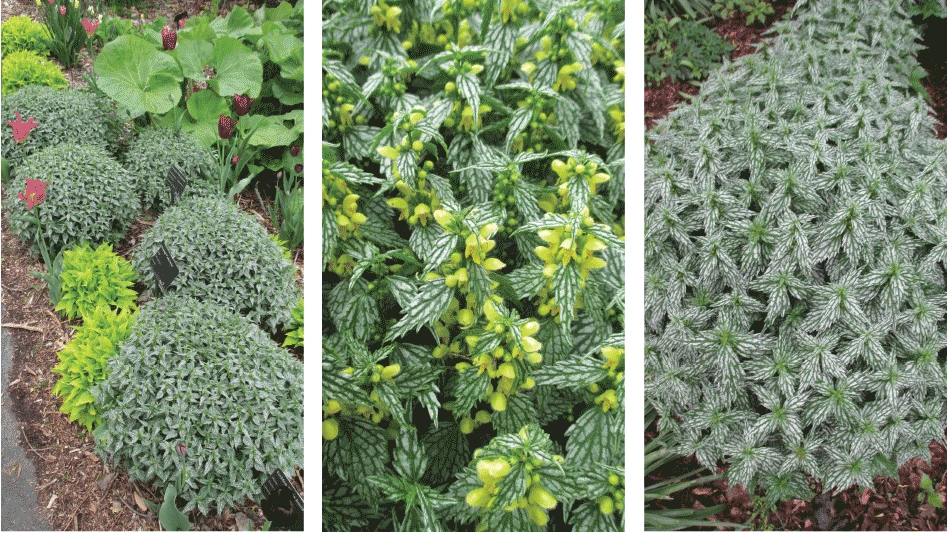 Pennsylvania bill exempts high tunnels, hoop houses from real estate taxes
Pennsylvania bill exempts high tunnels, hoop houses from real estate taxes
The Pennsylvania House and Senate sent two bills to the Governor for his signature that exempt high tunnels and hoop houses from real estate taxes, SB 638 and HB 1439. Both bills received unanimous approval in both houses.
During the past several years, two counties in Pennsylvania (Blair and Erie) had begun to levy real estate taxes on high tunnels. These plastic covered structures are used to extend the growing season and protect plants from snow and winter winds.
High tunnels have allowed nurseries, landscape contractors and garden centers to extend the growing season into the spring and fall, and to protect their plants from snow damage and temperature extremes during the winter. If high tunnels were to be taxed, it would have removed the economic benefits of these inexpensive structures.
Nursery Management wrote about the high tunnel tax battle in its March 2013 issue.
Oregon State creates genetically modified poplar
Forest geneticists at Oregon State University have created genetically modified poplar trees that grow faster, have resistance to insect pests and are able to retain expression of the inserted genes for at least 14 years, a report in the Canadian Journal of Forest Research recently announced.
The trees are one of the best successes to date in the genetic modification of forest trees, a field that is much less advanced than GMO products in crop agriculture. The advance could prove especially useful in the paper and pulp industries, and in an emerging biofuel industry that could be based on hybrid poplar plantations.
Commercial use of such trees could be done with poplars that also had been engineered to be sterile so they would be unlikely to spread their characteristics to other trees, researchers said.
For more: bit.ly/GMPoplar
USDA and DOE fund plant biofuel research
The U.S. Departments of Agriculture (USDA) and Energy (DOE) has announced $8 million in research grants to develop non-food feedstocks that can be used for bioenergy. The grants are part of a broader effort by the Obama administration to develop domestic renewable energy and advanced biofuels, providing a more secure future for America’s energy needs and enhancing rural economies.
The USDA and DOE projects are designed to improve biomass to be grown for biofuels-including selected trees and grasses-by increasing their yield, quality and ability to adapt to extreme environments. Researchers will rely on the most advanced techniques of modern genomics to develop breeding and other strategies to improve the crops. The research will be conducted on switchgrass, poplar and pine, among other plants.
Fiscal Year 2013 awardees include:
USDA-NIFA-funded
- University of Florida, Gainesville, Fla., $1,000,000
- Oregon State University, Corvallis, Ore., $1,000,000
DOE-funded
- Colorado State University, Ft. Collins, Colo., $1,385,763
- University of Georgia, Athens, Ga., $1,314,235
- University of Illinois, Urbana, Ill., $998,564
- Purdue University, West Lafayette, Ind., $863,576
- University of North Carolina, Chapel Hill, N.C., $1,543,490
For project descriptions: bit.ly/PlantBioenergy
Netafim names new director of marketing
Netafim USA CEO John Vikupitz has announced the appointment of irrigation professional Ze’ev Barylka as director of marketing for Netafim USA and Netafim Mexico.
Barylka will oversee all new product development and introductions, education and training, and marketing communications for the irrigation manufacturer. He will also be responsible for directing Netafim marketing efforts in Mexico.
ANLA submits comments to Canada on neonic regs
ANLA, in collaboration with SAF, submitted comments to the Canadian Pest Management Regulatory Agency (PMRA) regarding their recent Notice of Intent (NOI2013-01) called, “Action to Protect Bees from Exposure to Neonicotinoid Pesticides.” The steps described would apply to soybean and corn production areas, but could be easily applied more broadly, said Joe Bischoff, ANLA’s director of government relations.
Regulatory agencies, both in the U.S. and abroad, have been under growing pressure from activist groups to limit or ban the use of neonicotinoid pesticides. As the industry’s largest foreign trading partner, it was important to encourage the Canadian PMRA to base its decisions on sound science and recognize neonicotinoids as the important tool they are.
Novozymes and Monsanto create multimillion-dollar partnership
Monsanto Company and Novozymes have created The BioAg Alliance, which will bring together Novozymes’ commercial BioAg operations and capabilities within microbial discovery, development and production with Monsanto’s microbial discovery, advanced biology, field testing and commercial capabilities. The goal is a comprehensive research, development and commercial collaboration to help growers meet the challenge of producing more with less in a sustainable way.
 Parrotia persica ‘Vanessa’ is 2014 Urban Tree of the Year
Parrotia persica ‘Vanessa’ is 2014 Urban Tree of the Year
From the Society of Municipal Arborists: The Persian ironwood tree is native to the lower mountain slopes of northern Iran, and it has been planted widely in cities across Europe and North America for many years. It has great color in the spring, with glossy, green, red-tipped leaves that later turn a darker green through the summer. Fall color is spectacular, often with leaves of multiple colors on the tree at the same time: orange, purple, yellow and green. When older, this tree has flaky grey bark that is very attractive, giving it year-round appeal.
The cultivar ‘Vanessa’ emerged from Europe in the 1970s and is now widely cultivated in North American nurseries. ‘Vanessa’ is upright, almost columnar, with branches that arch gracefully outward towards the tip. It is a slow-growing small tree, reaching a height of about 36 feet at maturity. Perhaps because of its slow growth rate, it seems that much of the available nursery stock is slightly smaller than would be typical for street tree planting programs. It is hardy in USDA zones 4-8.
For more: bit.ly/CityTreesParrotia
AmericanHort officially debuts
AmericanHort, the industry’s new trade association, formally debuted Jan. 1 following the consolidation of the American Nursery & Landscape Association and OFA – The Association of Horticulture Professionals.
The new organization will represent the whole of the plant industry, including breeders, greenhouse and nursery growers, garden center retailers, distributors, interior and exterior landscapers, florists, students, educators, researchers, manufacturers and all of those who are part of the industry supply chain.
AmericanHort will have its primary office in Columbus, Ohio, and an office in Washington, D.C. to facilitate government relations and research activities, including the management of the Horticultural Research Institute. AmericanHort will also continue to manage America in Bloom, the industry’s community beautification initiative.
The group’s web site launched with information on membership and basic services. Enhancements to the site and additional membership features will roll out over the coming months.
For more: www.americanhort.org
AFE scholarships accepting applications
Two intern scholarships, available through the American Floral Endowment, are now accepting applications.
The Vic and Margaret Ball Intern Scholarship Program gives students the chance to intern at a commercial production greenhouse or nursery. Students will intern for periods of three, four or six months. Upon completion of their internship, they will receive a scholarship for $1,500 (three months), $3,000 (four months), or $6,000 (six months).
The Mosmiller Intern Scholarship Program gives students the chance to train at one of the leading retail, wholesale or allied trade operation for 10-16 weeks. Upon the successful completion of their internship, students receive a $2,000 scholarship. Students must be enrolled in a floriculture/environmental horticulture program at a two-year or four-year college or university in the U.S. The deadline for application submission is March 1.
For more: www.endowment.org
10 most frequently cited OSHA standards
The Occupational Safety & Health Administration recently published a list of the top 10 most frequently cited standards following inspections of worksites by the federal OSHA.
According to the OSHA website, the government organization “publishes the list to alert employers about these commonly cited standards so they can take steps to find and fix recognized hazards addressed in these and other standards before OSHA shows up. Far too many preventable injuries and illnesses occur in the workplace.”
For more: www.osha.gov/Top_Ten_Standards
Check for rodent damage in poly houses
Michigan State University Extension recommends nursery growers who put plants to bed for the winter in poly houses check for rodent activity. The increased snow cover combined with the bitterly cold temperatures may have slowed down rodent activity, but they are still searching for food. Poly houses contain hundreds of potted plants in a tightly packed environment for rodents to hide and feel a bit warmer, and have ample amounts of food sources in bark, twigs and leaf debris.
For more: bit.ly/RodentDamage
Get curated news on YOUR industry.
Enter your email to receive our newsletters.
Explore the January 2014 Issue
Check out more from this issue and find your next story to read.
Latest from Nursery Management
- NewGen Boxwood added to Proven Winners ColorChoice line
- Terra Nova releases new echinacea variety, 'Fringe Festival'
- American Horticultural Society names winners of 2025 AHS Book Awards
- Nufarm announces unified brand
- American Horticultural Society announces winners of 2025 Great American Gardeners Awards
- Shifting the urban environment
- The Growth Industry Episode 3: Across the Pond with Neville Stein
- What's in a name?







